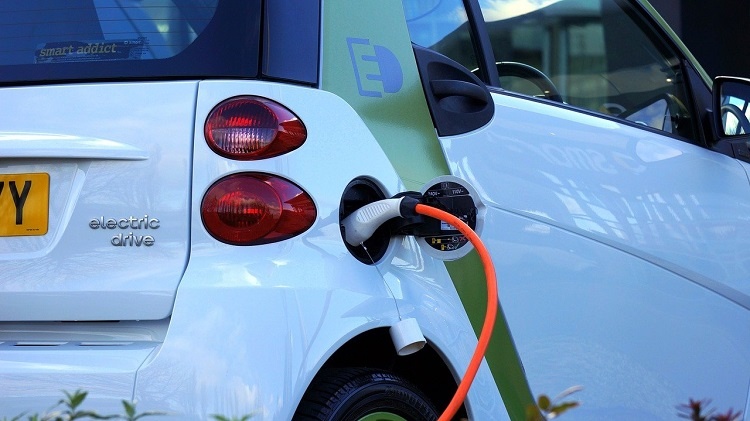Electric vehicles in the UK
Wider concerns around the environment, and the with the regular launch of new and improved electric cars during the last decade has seen interest in electric and hybrid vehicles rise. Lower tax duty and grant incentives from the Government have helped raise their profile – be it a Tesla, Porsche or other manufacturers, there’s no doubt that the electric vehicle, be it plug-in hybrid, self-charging hybrid or pure electric, is here to stay.
The main challenge for the public has been around how far these vehicles can actually travel on full range. Added to this and for those living in towns, there is added stress of “how do I charge the vehicle when I don’t have off street parking?”
Although motorway charging points have been widely criticised for not being able to cope with demand, the UK infrastructure for electric vehicles is constantly improving.
Motor trade – HSE guidance on safe working with electric vehicles
Electric and hybrid vehicles offer huge business opportunities with the recovery, repair, and maintenance of these vehicles outside the manufacturers and franchised dealership networks is increasing.
People in the motor vehicle repair and recovery sectors are now more likely to come across E&HVs and as a result need to be aware of the additional hazards they may be exposed to when working with these vehicles. They may also need to develop a wider range of skills and knowledge and have access to specialist tools and equipment in order to be able to work safely.
It’s important that you inform anyone within your business who works on or operates an electric vehicle of the main differences with these vehicles and the associated risks. For example, the all-important battery packs powering these vehicles can be potentially hazardous if they’re faulty, damaged or recharged incorrectly. These can cause explosions or fires and even deliver a fatal electric shock.
The HSE has produced useful guidance on safe working with such vehicles. Please visit the HSE site: https://www.hse.gov.uk/mvr/topics/electric-hybrid.htm
Employers have a duty to ensure electrical safety for their employees and other visitors to their premises, as well as protecting any electrical equipment provided. This can be particularly challenging in motor trade premises where there is a range of equipment, portable and fixed.
- The popularity and complexity of electric and hybrid vehicles introduces more safety considerations and hazards.
- Any employees working with electrical equipment or vehicles should have adequate training so they can work safely and the risk of injury and fire/explosion is reduced.
- For workplaces, the necessary fire safety risk assessment needs to have taken such vehicles (and the work on them) into account.
Plug-in electric vehicles originally used a “slow” recharge system; however there are now models with “fast” and “rapid” recharging systems. Different makes and shapes of recharging cable connectors also add to the variations between vehicles. The type of battery in a plug-in electric vehicle can also vary according to the make and model of car.
Our insurer partner Allianz has outlined some key actions for safety around electric and hybrid vehicles:
- Make sure that you understand the Dangerous Substances and Explosive Atmospheres Regulations (DSEAR) and fully comply with your duties under them.
- The person who completes your risk assessment for compliance with DSEAR must be aware of and act upon HSE guidance, including the HSE Approved Code of Practice (ACoP) for DSEAR and leaflet INDG139 “Using electric storage batteries safely” and the RISCAuthority leaflet RC59 “Fire safety when charging electric vehicles”.
- Consider ignition sources, ventilation and other vital matters in areas where battery charging may be carried out while completing risk assessments.
- Make sure that your employees have received all of the instruction, information and training needed for them to work safely.
- Clearly mark each charger, indicating what type of vehicles and batteries it may be used for.
- Avoid charging batteries when the premises are unattended, or if the battery may have been damaged.
- Ensure that areas set aside for battery and vehicle charging are suitable and safe (as determined by your risk assessments).
- Locate charging points in areas of sufficient space, away from significant fire and other hazards. Think about what you could do to slow the spread of a fire (and smoke) which starts in the charging area.
- Keep combustibles away from charger units.
- Do not allow storage on top of, or against, chargers.
- Protect chargers from the potential of vehicle impact.
- Take note of the maximum temperature a battery can be exposed to (which the pack should be labelled with) before carrying out operations where temperatures may get high, such as placing the vehicle in a paint baking unit.
- Measures should be implemented to limit any potential risks, e.g. by removing the batteries or by providing insulation to limit any temperature increase in the batteries. Consider the vehicle manufacturer’s instructions.
What’s an insurer’s view on electric vehicles?
It’s still early days but insurers are likely to be considering the potential cost of claims arising from the rapid increase in electric vehicles. How easy are they to fix? How expensive are the parts to replace? The cost of claims could potentially be increased by changing battery cells, the electronics that are in the exposed parts of the vehicle, and extended repair times.
Motor trade insurance specialists
Real Insurance are a specialist Motor Trade Insurance Broker, providing advice to a wide and diverse sector. We have many years of experience providing insurance solutions to a wide range of businesses, from mobile alloy wheel repairers to fully-fledged franchised motor dealers.
To obtain a tailored insurance quotation specific to the needs of your business, however large or small, please contact one our specialist advisors today. 0330 058 0260.
Sources: Allianz, AXA, HSE



